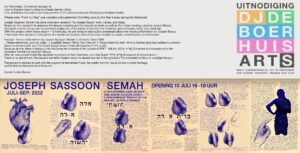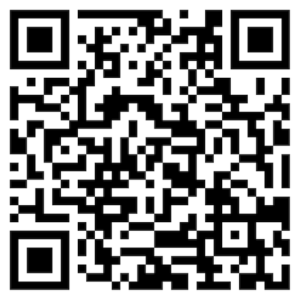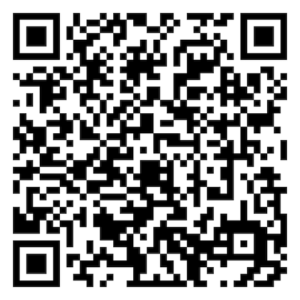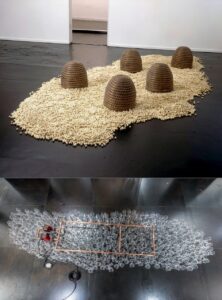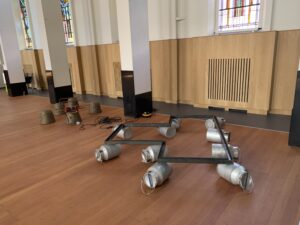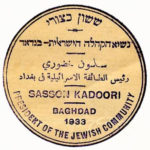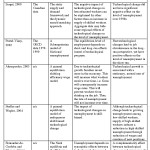Rick Vercauteren – After Joseph Beuys /After Wolf Vostell /After WWII
On Friendship / (Collateral Damage) IV – How to Explain Hare Hunting to a Dead German Artist
[The usefulness of continuous measurement of the distance between Nostalgia and Melancholia]
(September 2021 – February 2023)
A critical project concerning post-war artist Joseph Beuys
Lecture: Rick Vercauteren – After Joseph Beuys /After Wolf Vostell /After WWII
Two post-war German artists – Wolf Vostell / Jose(f)ph Beuys -As will be clear, both of them became the (symbolic) Victim; Jose(f)ph Beuys a volunteer soldier in the Third Reich transformed himself into the Victim of the Nazi era, and with him, post-war Germany will cure itself.
On the other hand, Wolf Vostell simply transformed himself into a Jew, i.e. the Victim.
Joseph Sassoon Semah 2021
Goethe-Institut Amsterdam
Herengracht 470
Amsterdam
Created by Joseph Sassoon Semah, curator Linda Bouws
Camera & editing: Bob Schoo, www.n-p-n.info
© Stichting Metropool Internationale Kunstprojecten 2022
Mati Shemoelof – A Babylonian Jew Named Joseph Sassoon Semah
On Friendship / (Collateral Damage) IV
How to Explain Hare Hunting to a Dead German Artist
[The usefulness of continuous measurement of the distance between Nostalgia and Melancholia]
A critical project concerning post-war artist Joseph Beuys
(September 2021 – February 2023)
Lecture: Mati Shemoelof ‘A Babylonian Jew Named Joseph Sassoon Semah’
Goethe-Institut Amsterdam,
Herengracht 470
Amsterdam
October 28, 2021
Created by Joseph Sassoon Semah, curator Linda Bouws
Camera and editing: Bob Schoo, www.n-p-n.info
© Stichting Metropool Internationale Kunstprojecten 2023
Deutsche Bank, Amsterdam. May 24, 2022. On Friendship / (Collateral Damage) IV
On Friendship / (Collateral Damage) IV
How to Explain Hare Hunting to a Dead German Artist
[The usefulness of continuous measurement of the distance between Nostalgia and Melancholia]
(September 2021 – December 2022)
A critical project concerning post-war artist Joseph Beuys.
Created by Joseph Sassoon Semah, curator Linda Bouws
May 24 2022, Deutsche Bank Amsterdam
De entree 195, 1101 HE Amsterdam
כיצד להסביר ציד ארנבות לאמן גרמני מת
[The usefulness of continuous measurement of the distance between Nostalgia and Melancholia]
Please remember, ‘Hare Hunting’ was a [codeword] euphemism for killing Jews by the Nazi troops during the Holocaust.
According to Jewish tradition, the hare is among mammals deemed not kosher, and therefore not eaten by (observant) Jews.
As will be clear, Jose[f]ph Beuys who always already surrounded himself by old Nazis has managed to promote himself as the (symbolic) Victim of the Third Reich in the (extended) territory of Post-Nazi West Germany.
Jose[f]ph Beuys who volunteered to sacrifice himself for the ideology of the Third Reich – succeeded to transform himself symbolically as it were, into the great healer of post-Nazi-Era, and with him, West Germany will cure itself.
Therefore, as a consequence of the need to further the authentic status of The Guest – The Guest was forced on 24 February 1986,
to correct the statement of Jose[f]ph Beuys’: “Wie man dem toten Hasen die Bilder erklärt / How to Explain Pictures to a Dead Hare” 26 November 1965. Since then, it should be read as follows –
” כיצד להסביר ציד ארנבות לאמן גרמני מת / How to Explain Hare Hunting to a Dead German Artist / Wie man einem toten deutschen Künstler die Hasenjagd erklärt”.
Finally, if the Guest is the symbolic Dead Hare, he may in the [end] has a Voice – in such a context obviously, the Guest’s conversation with the Dead German Artist changes in significance – because the words of the Guest already shifted to a certain power; That is the Guest’s / the Jew’s power to transform Jose[f]ph Beuys the ex-Nazi soldier from a self-made Victim to his original status i.e. the Victimizer.
Basically, we should remember that the actual transformation from a Victimizer to a Victim takes place in radical circumstances.
In our context, this implies that the transformation of post-war Jose[f]ph Beuys into a Victim took place in Post-Nazi West Germany;
Eventually, it would be tempting to say that the authentic Victim ‘The Guest’ i.e., The Jew, cannot be defined by his Victimizer.
Performance
Joseph Sassoon Semah with friends:
Baruch Abraham
Masja Austen
Peter Baren
Bülent Evren
Jom Semah
Camera & editing: Bob Schoo, http://www.n-p-n.info
© Stichting Metropool Internationale Kunstprojecten 2022
DJDEBOERHUISARTS- Balth. Floriszoonstraat 23, Amsterdam
July – September
10 July 2022, 17.00 hrs.
A talk between David de Boer and Joseph Sassoon Semah – A performance ‘Display of the Wound’, Joseph & Friends
Excerpt – from a letter written by Joseph Sassoon Semah to Albrecht Dürer 1986 …Please remember, such an order – [ Jose[f]ph Beuys “Show Your Wound ] “Zeige Deine Wunde – from a German [ex] Nazi soldier to a certain Guest is not innocent, and the Guest always knows what will become of this quest;
Because as it is, there is always a risk following the showing of the wound of BRIT – MILaH, בְּרִית מִילָה [Covenant of circumcision] in the Extended Territory of Jose[f]ph Beuys;
After all, one cannot forget the devastating actions of Nazi Germany upon the Guest’s בְּרִית מִילָה [Covenant of circumcision] – There is no secret here, the Guest’s authentic healed wound is already buried, in the ground of the extended territory of Jose[f]ph Beuys…
Gerhard-Marcks-Haus, Bremen. April 2022 – February 2023. Joseph Sassoon Semah: How to Explain Hare Hunting to a Dead German Artist. 4 interventions by the artist
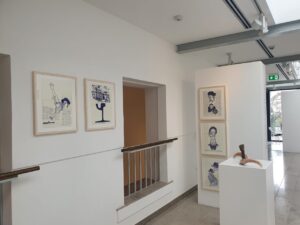 Gerhard-Marcks-Haus, Am Wall 208, Bremen
Gerhard-Marcks-Haus, Am Wall 208, Bremen
April 2022 – February 2023
Joseph Sassoon Semah: How to Explain Hare Hunting to a Dead German Artist
4 interventions by the artist
[The usefulness of continuous measurement of the distance between Nostalgia and Melancholia] (September 2021 – June 2022)
A critical project concerning post-war artist Joseph Beuys
Created by Joseph Sassoon Semah, curator Linda Bouws
© Stichting Metropool Internationale Kunstprojecten
Joseph Sassoon Semah (b. 1948) has been a regular guest at the Gerhard-Marcks-Haus since 1997. “Guest” is a central term to his art. He is a descendant of the last Chief Rabbi of Baghdad and now lives in Amsterdam. As an Arab Jew, he presents a perspective on the history of modern art that is shaped by his origins. In doing so, he both critiques and complements our thinking. In 2022 and the beginning of 2023 we will present four interventions by this artist.
When Sassoon Semah lived in Berlin in the late 1970s, he became interested in how German artists processed the subject of the Holocaust. This led to research into the work of Joseph Beuys (1921-1986) and Wolf Vostell (1932-1998). Vostell was one of the first artists in Germany to integrate photos of the mass murder into their artworks, while with Beuys it was primarily the “interpreters” who discovered references to it in his works with fat and felt.
Sassoon Semah is also interested in the role-playing of the two artists, for example when Vostell dressed as an Orthodox Jew in order to refer to a culture that had been destroyed in Germany and Europe, or when Beuys showed a Hitler salute, that was then reinterpreted as art. In the group of works shown in the Gerhard-Marcks-Haus Sassoon Semah refers to famous works of these artists and interprets them through this.
The drawings and sculpture demonstrate how Sassoon Semah reads and develops images.
The cross-section of the railroad track (the logistics of mass murder) can also be interpreted as a Hebrew letter, literally transgressing the common reading. In Jewish iconography, the horns recall Abraham’s rejection of human sacrifice. As musical instruments played at important ceremonies in the synagogue, they refer to the deeds of man and sometimes to the redemption of the people of Israel. Sassoon Semah invites museum visitors – most of whom have some Christian background – to immerse themselves in a world of imagery that is unfamiliar to them. By radically reinterpreting European artworks, he turns them into places of exile for a vanished culture.
On Friendship / (Collateral Damage) IV – How to Explain Hare Hunting To A Dead German Artist – Maarten Luther Kerk – Amsterdam
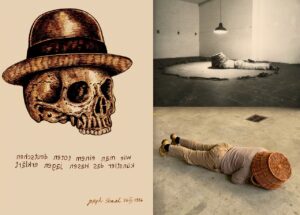 On Friendship / (Collateral Damage) IV – How to Explain Hare Hunting to a Dead German Artist
On Friendship / (Collateral Damage) IV – How to Explain Hare Hunting to a Dead German Artist
[The usefulness of continuous measurement of the distance between Nostalgia and Melancholia] (september 2021 – december 2022)
A critical project concerning post-war artist Joseph Beuys created by Joseph Sassoon Semah, curator Linda Bouws
Maarten Luther Kerk, Dintelstraat 134, Amsterdam
15 mei 2022, aanvang 15.30 uur, Opening Tentoonstelling, Performance en Bijeenkomst
15 mei t/m 15 juli Tentoonstelling, bezoek op afspraak
Programma 15 mei:
15.30 uur: Welkom Dr. A.H. Wöhle, President Evangelisch-Lutherse Synode in de Protestantse Kerk
15.45 uur: Performance Joseph Sassoon Semah en zijn vrienden en tentoonstelling bezichtigen
16.15 uur: Meeting met o.a. Andreas Wöhle en Joseph Sassoon Semah: Joseph Beuys en Christus impuls
17.15 uur: Afsluitende borrel
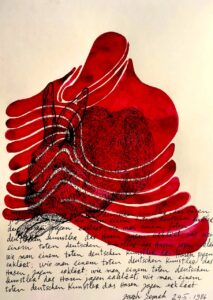 In het werk van kunstenaar Joseph Beuys is de christelijke iconografie een van de belangrijkste thema’s, met name de Christus impuls.
In het werk van kunstenaar Joseph Beuys is de christelijke iconografie een van de belangrijkste thema’s, met name de Christus impuls.
Hij gebruikt objecten die staan voor het geestelijke zoeken, de moderne devotie: de crucifix, een wandelstok, een vogel, een haas.
Door te lijden ontstaat het vermogen tot scheppingskracht “kunst is een geestelijke act die telkens opnieuw moet gebeuren.”
Beuys werd sterk beïnvloed door de antroposoof Rudolf Steiner, “Christus-ich Kraft”. Voor Steiner was de fysieke incarnatie van Jezus aan het begin van de tijdrekening een eenmalige gebeurtenis.
Steiner noemt dit de ‘Christus impuls’ en ‘het mysterie van Golgotha’.
Welk Christusbeeld had Beuys voor ogen? Hoe verhoudt zijn Christusbeeld zich tot zijn kunst?
Welke invloed had Steiner op zijn werk?
Hoe reflecteert Joseph Sassoon Semah in zijn kunstwerken op Joseph Beuys?
Hoe kijkt Andres Wöhle naar Beuys, Steiner en Joseph Sassoon Semah?
Er wordt samengewerkt met o.a. Maarten Lutherkerk, Gerhard-Marcks-Haus Bremen, Goethe-Institut Amsterdam, Duitsland Instituut Amsterdam/UvA, Lumen Travo Gallery, Deutsche Bank, Landgoed Nardinclant-Amsterdamgarden, Redstone Natuursteen & Projecten, Geestelijke Gezondheidszorg AmacuraThe Maastricht Institute for Arts.
Na afloop van de manifestatie wordt een complementaire publicatie samengesteld.
Het project is mede mogelijk gemaakt door het Mondriaan Fonds, het publieke stimuleringsfonds voor beeldende kunst en cultureel erfgoed en Redstone Natuursteen & Projecten.
